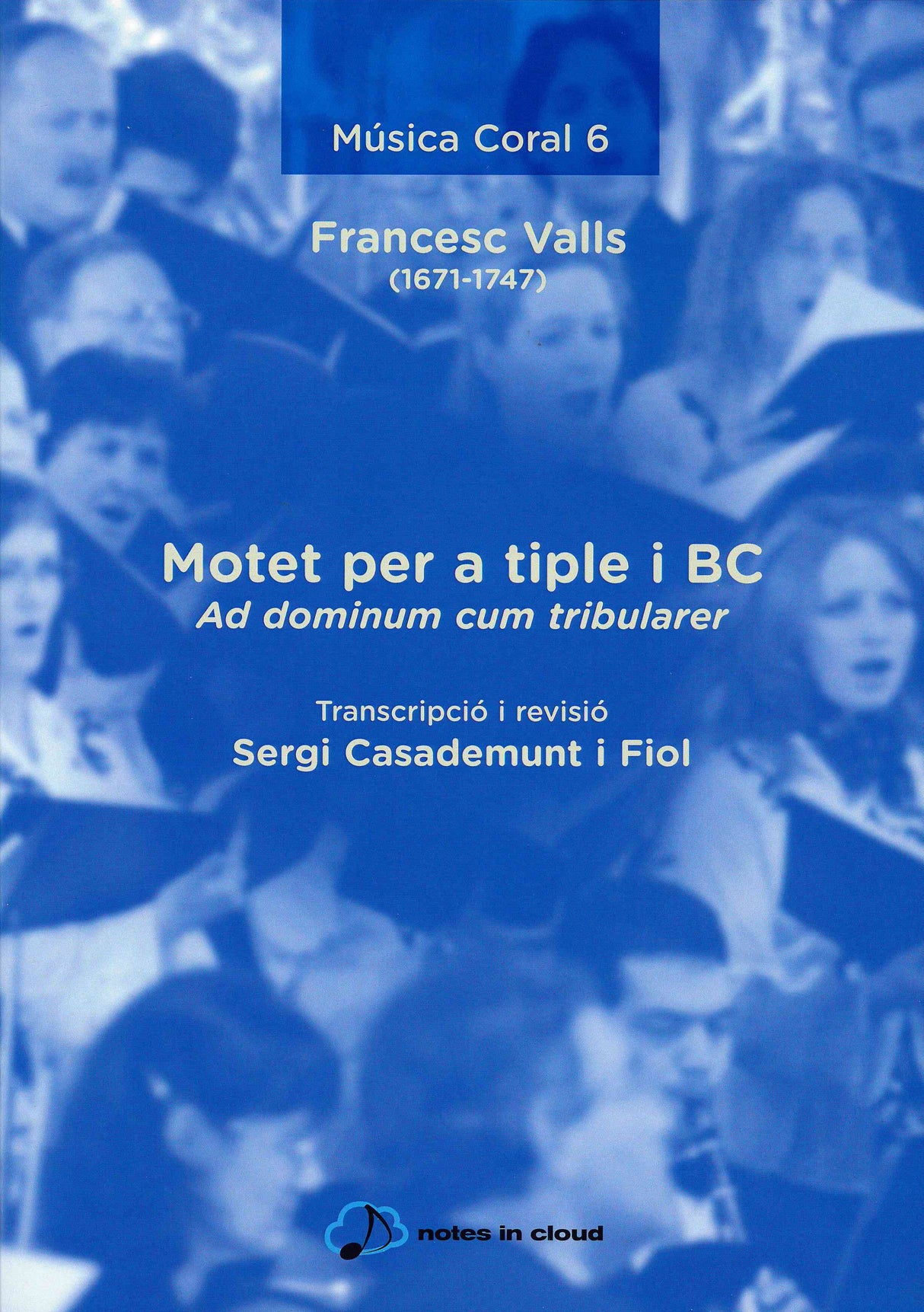Valls: Motet per a tiple i BC
Expected to ship in 1-2 weeks.
- Composer: Francisco Valls (1671-1747)
- Format: Full Score
- ISMN:
- Size: 8.3 x 11.7 inches
- Pages: 16
Description
FRANCESC VALLS was born in Barcelona in 1671 (1). He was named Mestre de Capella (Chapel Choirmaster) at the Santa Maria del Mar Church in 1696 and at the end of the year he moved on to take up the same role on a permanent basis at Barcelona Cathedral. He retired in 1726 after 30 years of service and passed away in Barcelona in 1747.
Francesc Valls is considered to be a key composer of Catalan music in the Baroque style both for the important work he did in Barcelona as well as for his intellectual freedom which led him to develop an interest in the music being written around Europe. in his treatise on harmonic theory Mapa armónico práctico (2) he explains what French, German and Italian composers were doing at that time, highlighting the Italians' style. Despite this praise, he did not agree with using the Italian theatre style in religious compositions as he points out in his treatise: "The Italians exceed at showing good taste in music and their style of Theatrical Music, which embellishes the effects around the verses whether they be joyful, sad, playful or lively, as well as the connection of instruments decorating the composition. This is admirable in the theatre, but in a church, as has been said many times, it would be inappropriate."
Almost all Valls' work is religious except for a few cantatas and the secular pieces known as tonos humanos and we are left wondering what kind of music he would have written for the theatre. He studied in a structured scholastic style, and when he discovered Italian music at first hand due to the Spanish War of Succession in the early eighteenth century, he was able to evolve in his musical compositions, while maintaining tradition, to levels similar to those achieved by German composers who assimilated the Italian influence without losing their counterpoint heritage.
These motets were composed with this new aesthetics. Three of them can be found in the Mapa armónico práctico treatise, while another three come from a manuscript from the period of the confiscation of convents and monasteries in Spain and are now conserved in the University of Barcelona. Finally, there are six pieces from the archives of Barcelona Cathedral stored at the National Library of Catalonia.
We have recorded several of these pieces with the Guillamí Consort group for the album Francesc Valls i la música de l'Arxiduc Carles published by La Mà de Guido.
We hope that by publishing this selection of motets, we will help more musicians get to know them and play them.
Sergi Casademunt i Fiol
Publishers use a lot of words to describe what they sell, and we know it can be confusing. We've tried to be as clear as possible to make sure you get exactly what you are looking for. Below are descriptions of the terms that we use to describe the various formats that music often comes in.
Choral Score
A score for vocalists that only contains the vocal lines. The instrumental parts are not there for reference. Generally, cheaper than a vocal score and requires multiple copies for purchase.
Facsimile
Reproductions of the original hand-written scores from the composer.
Full Score
For ensemble music, this indicates that the edition contains all parts on a single system (there are not separate parts for each player). In larger ensembles, this is for the conductor.
Hardcover
Hardbound. Generally either linen-covered or half-leather.
Orchestral Parts
Similar to a wind set, this is a collection of parts. In the case of strings, the numbers listed are the number of copies included, though generally these are available individually (often with minimum quantities required).
Paperback
When publishers offer multiple bindings (e.g. hardcover) or study scores, this is the "standard" version. If you're planning to play the music, this is probably what you want.
Performance / Playing Score
A score of the music containing all parts on one system, intended for players to share. There are not separate parts for each player.
Set of Parts
For ensemble music, this indicates that there are separate individual parts for each player.
Solo Part with Piano Reduction
For solo pieces with orchestra, this is a version that contains a piano reduction of the orchestra parts. For piano pieces, two copies are typically needed for performance.
Study Score
A small (think choral size) copy of the complete score meant for studying, and not playing. They make great add-ons when learning concertos and small chamber works.
Vocal Score
A score prepared for vocalists that includes the piano/organ part or a reduction of the instrumental parts.
Wind Set
For orchestral music, this is a collection of wind and percussion parts. The specific quantities of each instrument are notated.
With Audio
In addition to the printed music, the edition contains recordings of the pieces. This may be an included CD, or access to files on the internet.
With / Without Fingering (Markings)
Some publishers prepare two copies - a pure Urtext edition that includes no fingering (or bowing) suggestions and a lightly edited version that includes a minimal number of editorial markings.


